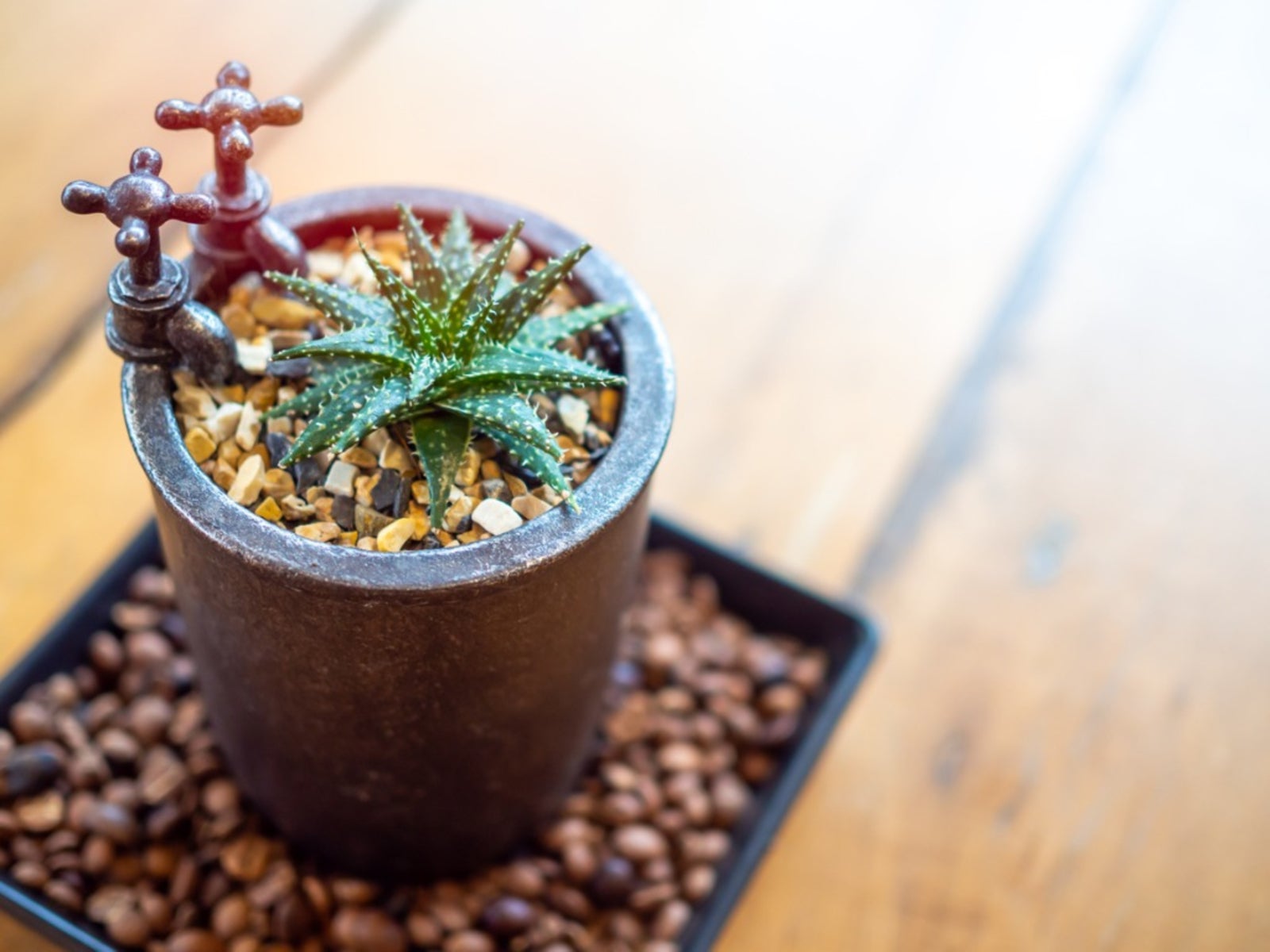Raising Humidity: How To Increase Humidity For Houseplants


Before you bring new houseplants into your home, they probably spent weeks or even months in a warm, humid greenhouse. Compared to a greenhouse environment, the conditions inside most homes are quite dry, especially in winter when the furnace is running. For this reason, it is important that you learn and practice appropriate humidity houseplant care to ensure the longevity and health of your beloved plants.
Humidity for Houseplants
Indoor plants need humidity levels between 40 and 60 percent, and suffer from stress when the humidity for houseplants is outside that range. If you don't have a hygrometer to measure the humidity inside your home, watch your houseplants for signs of stress. Consider raising humidity levels when your houseplants exhibit these symptoms:
- Leaves develop brown edges.
- Plants begin to wilt.
- Flower buds fail to develop or drop from the plant before they open.
- Flowers shrivel soon after opening.
How to Increase Humidity
Increasing humidity levels in the home is not difficult and will prove beneficial in the long run. Misting plants, growing them in groups, and using water-filled pebble trays are the most popular methods for raising humidity. Misting plants with a fine spray of water raises the humidity around the plant, but the effect is temporary. You should not mist plants with hairy leaves, such as African violets, however. The “hair” on the leaves holds water in place, encouraging diseases and leaving unsightly spots on the foliage. Placing houseplants in groups not only looks terrific from a design perspective, but it also creates a pocket of humidity. You can increase the humidity even more by placing a dish of water in the center of the cluster. Keep a container of water nearby to make it easy to replenish the water in the dish. Another way of increasing humidity levels around your plants is to set them on a tray of pebbles and water. Place a layer of pebbles in the tray, then add water until the pebbles aren't quite covered. The pebbles hold the plant above the water so that the roots don't become waterlogged. As the water in the tray evaporates, it increases the moisture in the air around the plant.
Humidity Houseplant Care
Rooms where you use a lot of water are often very humid. If a plant in a kitchen, bathroom, or laundry room shows symptoms of stress from high humidity, move it to another part of the house. On the other hand, plants that show symptoms of low humidity will benefit from spending some time in the humid parts of your house. Most houseplants originate from humid jungle environments, and moisture in the air is essential for their health. You'll be surprised at the way your plant will respond to adjustments in humidity, and you'll have the satisfaction of enjoying lush, thriving plants.
Gardening tips, videos, info and more delivered right to your inbox!
Sign up for the Gardening Know How newsletter today and receive a free copy of our e-book "How to Grow Delicious Tomatoes".

Jackie Carroll has written over 500 articles for Gardening Know How on a wide range of topics.
-
 Try The Trend – Turn Any Bed Into A Keyhole Garden With This Clever In-Ground Composter
Try The Trend – Turn Any Bed Into A Keyhole Garden With This Clever In-Ground ComposterKeyhole gardening is an efficient and sustainable practice that saves space. Get started on this DIY project quickly and easily with an in-ground composter.
By Bonnie L. Grant
-
 4 Superfast Composting Methods: Turn Waste Into Garden Gold In 30 Days Or Less
4 Superfast Composting Methods: Turn Waste Into Garden Gold In 30 Days Or LessTry the fastest composting methods to turbocharge your pile and transform kitchen scraps and garden waste into finished compost in just a few weeks.
By Mary Ellen Ellis
-
 8 Easy Care Houseplants That Live A Long Time
8 Easy Care Houseplants That Live A Long TimeClick here to learn about our 8 favorite low maintenance houseplants that can, with proper care, live a long time.
By Amy Grant
-
 How Often Should You Repot Plants?
How Often Should You Repot Plants?Escaping roots and shrinking leaves may mean your plant wants a new pot, but some like staying cramped and cozy.
By Mary Ellen Ellis
-
 Orange Flowering Houseplant Varieties With Tropical Flair
Orange Flowering Houseplant Varieties With Tropical FlairClick here to learn about some cheerful orange-blooming houseplants you can try growing.
By Mary Ellen Ellis
-
 Variegated Houseplants With Lovely Leaves
Variegated Houseplants With Lovely LeavesWhat are some of the best variegated houseplants to add to your collection? Click here to find out.
By Amy Grant
-
 Lovely, Lacy Indoor Foliage Plants
Lovely, Lacy Indoor Foliage PlantsClick here to learn about some houseplants with lacy foliage to add to your collection.
By Mary Ellen Ellis
-
 Best Christmas Houseplants And Plants For Winter Holidays
Best Christmas Houseplants And Plants For Winter HolidaysClick here for an idea of the best houseplants to use for holiday décor for Christmas, Hanukkah, Kwanzaa, and New Year’s.
By Laura Miller
-
 Best Big Houseplants To Create An Indoor Oasis
Best Big Houseplants To Create An Indoor OasisIf you have the space you may want to grow some large houseplants. Here are some ideas.
By Mary Ellen Ellis
-
 Relaxing Plants To Grow Indoors For A Calmer Mind
Relaxing Plants To Grow Indoors For A Calmer MindAre there houseplants that can help you to relax? Click here to find out.
By Laura Miller